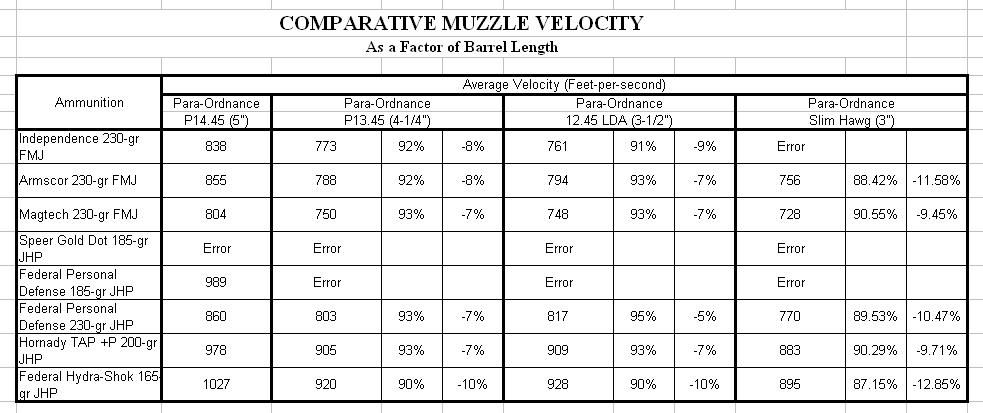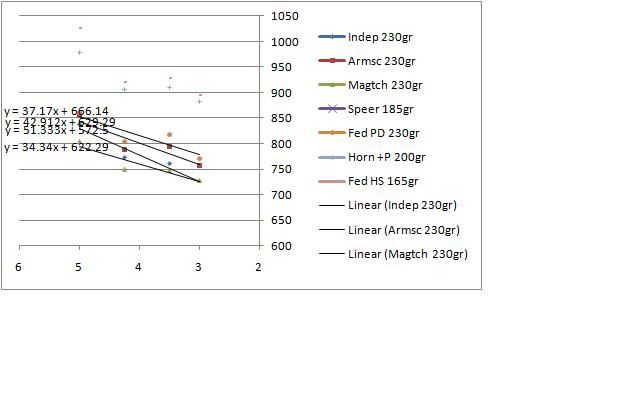MashieNiblick
Moderator
would optimally like to obtain an equation for correlation from the industry gurus here if at all possible
anecdotal experience or personal testing would be beneficial as well, however
listed below can be found some of my recent observations:
observations:
- .45 G.A.P. muzzle velocities seem to be on par with .45 A.C.P. + P muzzle velocities despite the shorter cartridge length
- www.fiocchiusa.com maximum muzzle velocity, barrel length, and bullet weight listings for .38 special + p and .357 magnum are as follows:
-- .38 special + P:
--- max muzzle velocity = 1100fps
--- barrel length = 3"
--- bullet weight = 110gr
--.357 magnum
--- max muzzle velocity = 1500fps
--- barrel length = 4"
--- bullet weight = 125gr
question:
- would it be safe to assume that the muzzle velocity of the .357 magnum round listed above would approach 1100fps for a 3" barreled pistol?
- if not, how close would it get?
there have got to be some real basic ballistics equations with variables of: bullet weight, muzzle length, muzzle velocity
i would assume that these equations would also have a powder weight term which would be multiplied by a coefficient of some sort
also i would assume that a barrel length coefficient would be needed and such coefficient would probably be exponential
i could solve for powder weight multiplied by the coefficient for both rounds, set the other sides of the equations = to each other, change the barrel length, and solve for muzzle velocity by myself if i knew the proper equation. . . .
if someone could point me in the right direction that would be great
any help would be appreciated
thank you in advance
- MN
anecdotal experience or personal testing would be beneficial as well, however
listed below can be found some of my recent observations:
observations:
- .45 G.A.P. muzzle velocities seem to be on par with .45 A.C.P. + P muzzle velocities despite the shorter cartridge length
- www.fiocchiusa.com maximum muzzle velocity, barrel length, and bullet weight listings for .38 special + p and .357 magnum are as follows:
-- .38 special + P:
--- max muzzle velocity = 1100fps
--- barrel length = 3"
--- bullet weight = 110gr
--.357 magnum
--- max muzzle velocity = 1500fps
--- barrel length = 4"
--- bullet weight = 125gr
question:
- would it be safe to assume that the muzzle velocity of the .357 magnum round listed above would approach 1100fps for a 3" barreled pistol?
- if not, how close would it get?
there have got to be some real basic ballistics equations with variables of: bullet weight, muzzle length, muzzle velocity
i would assume that these equations would also have a powder weight term which would be multiplied by a coefficient of some sort
also i would assume that a barrel length coefficient would be needed and such coefficient would probably be exponential
i could solve for powder weight multiplied by the coefficient for both rounds, set the other sides of the equations = to each other, change the barrel length, and solve for muzzle velocity by myself if i knew the proper equation. . . .
if someone could point me in the right direction that would be great
any help would be appreciated
thank you in advance
- MN



